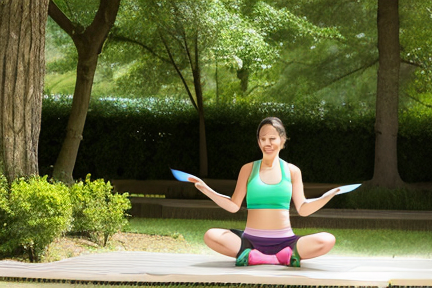Handstand for Circulation: Enhancing Blood Flow and Cardiovascular Health
Handstand for Circulation: Enhancing Blood Flow and Cardiovascular Health
Introduction
Hey there! Are you ready to flip your world upside down and discover the incredible benefits of handstands? In this article, we’ll dive into how handstands can help enhance blood flow and improve your cardiovascular health. It’s time to get your heart pumping and take your fitness journey to new heights!
Why Blood Flow Matters
Before we jump into the specifics of handstands, let’s take a moment to understand why blood flow is so crucial for our overall health. Our circulatory system plays a vital role in delivering oxygen and nutrients to our body’s tissues while removing waste products. Optimal blood flow ensures that every part of our body receives the nourishment it needs to function at its best.
Handstands and Blood Flow
1. Inversion Effect
One of the remarkable aspects of handstands is the inversion effect. When you go upside down in a handstand, gravity reverses its impact on your body. This reversal creates a unique opportunity for enhanced blood flow. As you invert, the blood that typically pools in your lower extremities gets the chance to flow more easily back towards your heart. The result? Improved circulation throughout your body.
2. Increased Heart Rate
Engaging in physical activity, such as handstands, naturally increases your heart rate. When your heart beats faster, it pumps more blood, facilitating greater circulation. Handstands require core stability, balance, and strength, all of which contribute to an elevated heart rate. By incorporating handstands into your fitness routine, you can give your cardiovascular system a fantastic workout.
3. Muscle Activation
Performing a handstand engages a myriad of muscles throughout your body. The effort required to maintain balance and stability activates your core, upper body, and lower body muscles. When muscles contract, they stimulate blood flow, allowing oxygen-rich blood to reach these active areas. Regular handstand practice can contribute to improved muscle function and overall cardiovascular health.
Safety Considerations
As we explore the benefits of handstands for circulation and cardiovascular health, it’s essential to prioritize safety. Here are a few tips to keep in mind:
1. Proper Form and Technique
Mastering the correct form and technique is crucial for safe and effective handstand practice. Start with wall-supported handstands to build strength and confidence before progressing to freestanding handstands. Engage your core, maintain a straight line from your wrists to your shoulders and hips, and breathe deeply throughout the exercise.
2. Gradual Progression
Like any new physical activity, it’s important to progress gradually. Begin with shorter durations and gradually increase your time in a handstand as you build strength and stamina. Listen to your body and respect its limits to prevent overexertion or injury.
3. Spotter or Instructor
If you’re new to handstands or want an extra layer of safety, consider practicing with a spotter or working with a qualified instructor. They can provide guidance, support, and ensure proper alignment and form.
Conclusion
Congratulations! You’ve unlocked the key to improving blood flow and cardiovascular health through handstands. The inversion effect, increased heart rate, and muscle activation all contribute to enhanced circulation, providing numerous benefits for your overall well-being. Remember to prioritize safety, practice with proper form, and gradually progress to maximize the benefits while minimizing the risk of injury.
So, are you ready to take the plunge and incorporate handstands into your fitness routine? Embrace the challenge, reap the rewards, and enjoy the invigorating feeling of enhanced blood flow and a healthier cardiovascular system. It’s time to defy gravity and embrace the transformative power of handstands!
*Note: The information provided in this article is for educational purposes
You may like this video!
